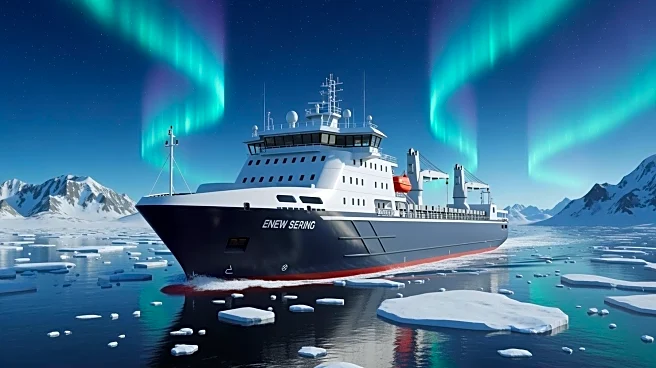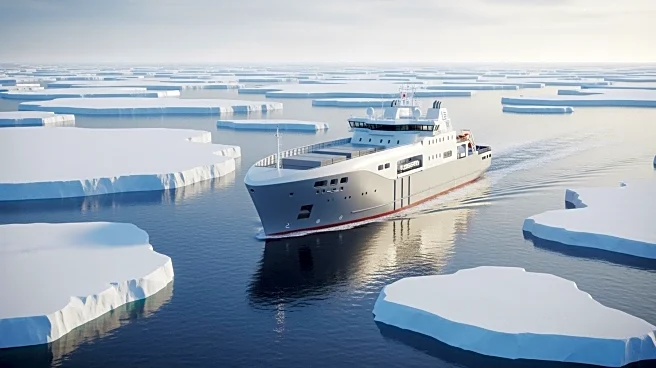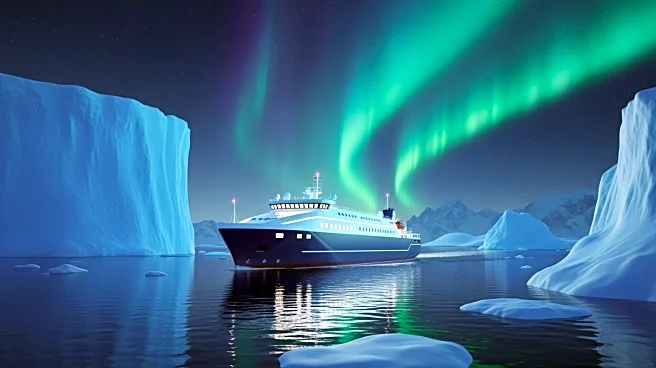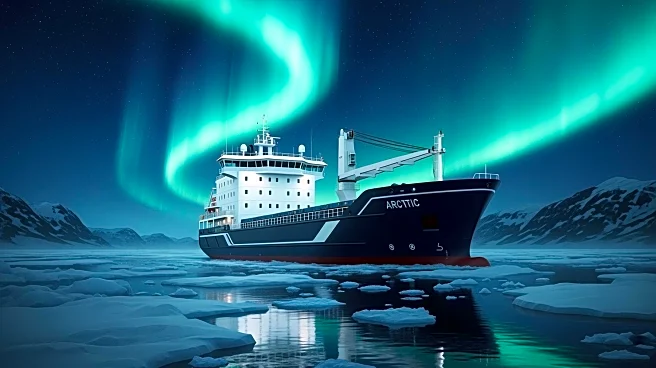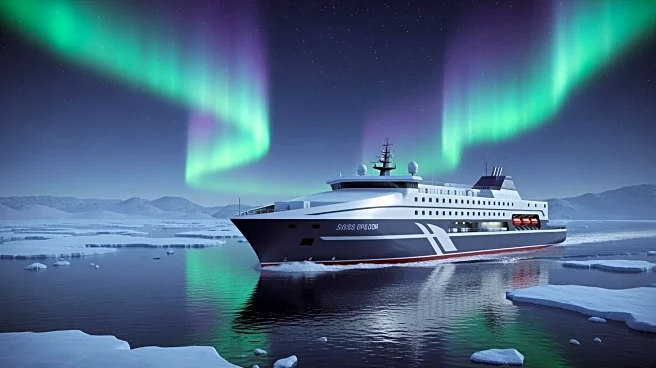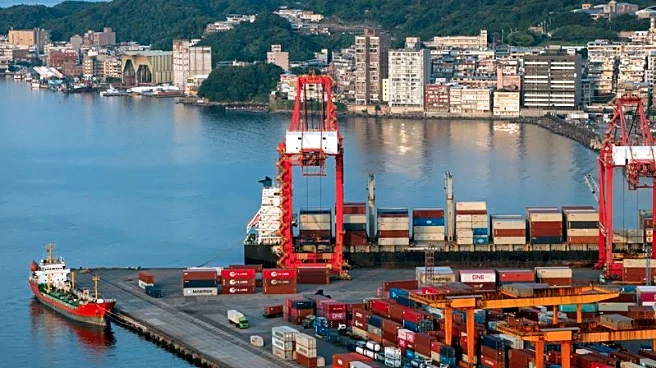What's Happening?
A Chinese container ship, the Istanbul Bridge, has completed a pioneering voyage from China to Europe via the Arctic, known as the 'Ice Silk Road.' This route, accessible only a few months per year, offers
a faster alternative to traditional shipping routes like the Suez Canal. The journey took 26 days, significantly reducing delivery times for high-value goods. The Arctic passage is part of China's Belt and Road Initiative, aimed at enhancing global trade connectivity. The route's success highlights emerging opportunities for trade as climate change impacts Arctic ice coverage.
Why It's Important?
The successful completion of the Arctic route by the Istanbul Bridge marks a significant development in global trade logistics. As climate change continues to thaw Arctic ice, new shipping routes are becoming viable, offering faster and potentially more cost-effective options for transporting goods. This development could reshape global trade patterns, particularly for sensitive cargo that benefits from the Arctic's lower temperatures. The route also underscores strategic implications in the U.S.-China rivalry, as both nations seek to expand their presence in the Arctic region.
What's Next?
The Arctic route provides a new option for companies shipping high-tech cargo from China to Europe. As ice coverage continues to shrink, the route may become more accessible, potentially leading to increased commercial use. The strategic implications of this development are significant, as the Arctic emerges as a key arena in geopolitical dynamics. Companies and governments will likely monitor the route's viability and impact on global trade closely.
Beyond the Headlines
The Arctic route's emergence highlights the intersection of climate change and global trade, raising questions about environmental sustainability and geopolitical tensions. As the Arctic becomes more navigable, nations may vie for control and influence in the region, impacting international relations and security dynamics.
